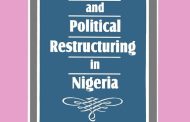China is sending shock waves across the world energy and auto markets with its entry into the list of countries which have fixed deadline for fossil fuel based car in favour of electric cars. The size of China’s economy and its volume of energy consumption are such that the deadline of 2040 it is eyeing will act as a game changer in the energy sector. As at now, only the United Kingdom and France have so far announced deadlines by which fuel powered cars would have given way to electric cars. 2040 is when Britain, for example, is looking at although most observers believe fossil fuel powered cars would be significantly gone by 2020 – 2025. Yesterday, China announced setting regulators on to the task of arriving at a definite date by which production and sale of fuel powered cars might be over.

According to this analysis, taking over the global electric car market is why China is betting on the electric car
Energy experts say that, by the move, China will be killing four birds with a single stone. It will reduce carbon emission in China, checkmate pollution, reduce its dependency on fossil fuel and plunge fully into the electric market, including the possibility of being the market leader. 2040, the speculated deadline is just a little over two decades from now.
China’s move reminds the world of the main point in BP’s 2017 Energy Outlook that the global energy scenario towards 2035 still favours Asia as leading in pattern of demand for energy away from the United States and Europe. Energy as a measure of productive activities and China as the reigning workshop of the world means that its energy and energy related policies have automatic global impacts. Spencer Dale, Group Chief Economist, categorically elaborated that China is the world’s largest consumer of energy and has been the most important source of growth for global energy over the past 20 years. He added how “China really matters. It’s the world’s largest market for energy; it’s also the world’s largest growth market for energy”.
In addition to the foregone, China will be the largest overall source of growth in respect of renewable energy for the next 20 years, adding far beyond the EU and US combined even as the European Union (EU) is scored as leading the way in terms of the penetration of renewables, the share of renewables in its power sector doubling to almost 40% between now and 2035. Shale gas production is also calculated to grow at 5.2% per year and to account for around 60% of the increase in gas supplies during the period. While the United States will lead this process for some time, China is again projected to emerge as the second largest shale supplier towards 2035.
The implication is that the two great powers of the 21st century are also going to be the two global energy powers in the world. This is the first time this would be happening and the implications for weaker countries might be stomach churning, particularly for petrodollar states in Africa. This is more so that, according to the BP analysis, low cost producers will trump high cost producers. Almost all African oil states are high cost producers.
The temptation would be to think that African petrodollar states such as Nigeria would try to quickly get it right by diverting to agriculture but they would not do so because, fundamentally, these countries think development is a leisurely process which would come when it would come rather than an iron fisted process requiring a holistic narrative and planning to the last detail. In this context, the future could be problematic.

A BP global energy imagination towards 2035
The good news though is that the world has nothing to fear about adequate supply of fossil fuel up to 2050. In fact, according to the analysis, oil, gas and coal remain the dominant sources of energy as to account for more than 75% of energy supplies in 2035 (down from 85% in 2015). That means all the talk about a new energy mix is just 10% of renewables although we are told in the analysis how oil, coal and gas will be battling for space in an emerging energy mix in which renewables along with nuclear and hydro energy would “provide half of additional energy required”. Of the old three energy sources – oil, gas and coal, gas is expected to grow faster than the rest, “with consumption increasing by 1.6% per year between 2015 and 2035”.
Like the world itself, global energy is also in an interregnum – that fluid moment when the old order is no longer sustainable but the old order is still not quite in place yet beyond a few signs. Oil, coal and gas have made possible industrial civilisation and, subsequently, made the world to take many features of modernity for granted, from advanced medical facilities to the aeroplance and even to democracy but oil, in particular, has left woes behind – wars, coups, so-called humanitarian interventions, unspeakable repression and, above all, climate change. We see what the situation would be by 2035!




























